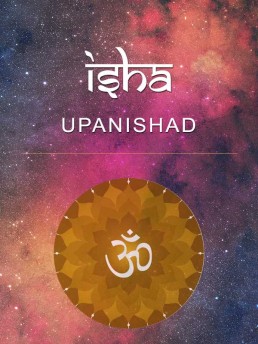तत्त्वं पूषन्नपावृणु सत्यधर्माय दृष्टये ॥ १५ ॥
tattvaṃ pūṣannapāvṛṇu satyadharmāya dṛṣṭaye || 15 ||
Isha Upanishad Home
Isha – Sri Shankara’s Introduction
Isha – Invocation
Isha – 1-īśāvāsyamidaṃ sarvaṃ
Isha – 2-kurvanneveha karmāṇi
Isha – 3-asuryā nāma te lokā
Isha – 4-anejadekaṃ manaso
Isha – 5-tadejati tannaijati
Isha – 6-yastu sarvāṇi
Isha – 7-yasminsarvāṇi bhūtāny
Isha – 8-sa paryagāc chukram
Isha – 9-andhantamaḥ praviśanti
Isha – 10-anyad evāhur vidyayā
Isha – 11-vidyāṁ cāvidyāṁ ca
Isha – 12-andhaṁ tamaḥ praviśanti
Isha – 13-anyad evahūḥ
Isha – 14-sambhūtiṁ ca vināśaṁ
Isha – 15-hiraṇmayena pātreṇa
Isha – 16-pūṣann ekarṣe yama
Isha – 17-vāyur anilam amṛtam
Isha – 18-agne naya supathā

Commentary by Sri Adi Sankaracharya – Translated in English
The highest result that could be achieved. according to the Sastras, by wealth of men and the deities is absorption into Prakriti. Up to this is rotation in Samsara. Beyond this is the result of the pursuit of knowledge preceded by a renunciation of all desire, i.e., the seeing of the Atman in everything as indicated in verse 7. Thus the two-fold purport of the Vedas, one stimulating to activity and the other drawing to renunciation has been explained. The Brahmanas up to Pravargya Brahmana were utilized for the elucidation of the former purport of the Vedas which is indicated by mandatory and prohibitory injunctions. The Brihadaranyaka hereafter is to deal with the elucidation of the latter purport of the Vedasrenunciation. Now, by what road he, who has been performing Karma as enjoined from conception to the grave and along with it the worship of the lower Brahman in accordance with verse 11, attains immortality, will be explained. He who has been worshipping the manifested Brahman referred to in the passage “That is the True, the Aditya, the Purusha in this orb: and the Purusha in the left eye; both these are true” and also has been performing Karma as enjoined, entreats, when the hour of death is arrived, the way leading to the Atmanthe True, by the text beginning with ‘Hiranmayena, etc.’ ‘Hiranmaya’ means seeming golden hence resplendent. ‘Patrena’ means as if by a lid forming a cover. ‘Satyasya,’ means ‘of the Brahman sitting in the orb of the Sun.’ ‘Apihitam’ means ‘covered.’ ‘Mukham’ means‘opening.’ ‘Apavrinu’ means ‘open.’ ‘Satyadharmaya,’ to me who have been worshipping Satya or the True or who have been practising Satya, i.e., ‘virtue as enjoined.’ ‘Drishtaye’ means ‘for realizing the Satya or the True which thou art.’
Commentary by Swami Sivananda
Hiranmayena means ‘by the golden’. Patrena means ‘as if by a disc or lid’. The phrase ‘golden disc’ means ‘the solar orb’. Hiranya means ‘line a golden’ i.e., ‘full light, effulgent’. Satyasya means ‘of the Brahman who is inside the orb of the Sun’. Apihitam means ‘covered’. Mukham means ‘face’. Apavrunu means ‘open’. Satyadharmaya-to me who have been worshipping Satya or the Truth (Brahman) or who have been practising Satya, i.e., virtue in accordance with the injections of the Sastras. “O Pushan (Fosterer or nourisher), remove the veil from they face that I may see Thee, that I may have Self-realisation-I, who am a Satya-Dharma-who constantly meditates on Thee, the Satya.” Pushan means ‘the nourisher’ and is another name for the deity of the sun.
Ishavasya Upanishad – Verse 15 – Isha – 15-hiraṇmayena pātreṇa – In Sanskrit with English Transliteration, Meaning and Commentary by Adi Shankaracharya (Sankara Bhashya) and Swami Sivananda – Ishavasya-15
